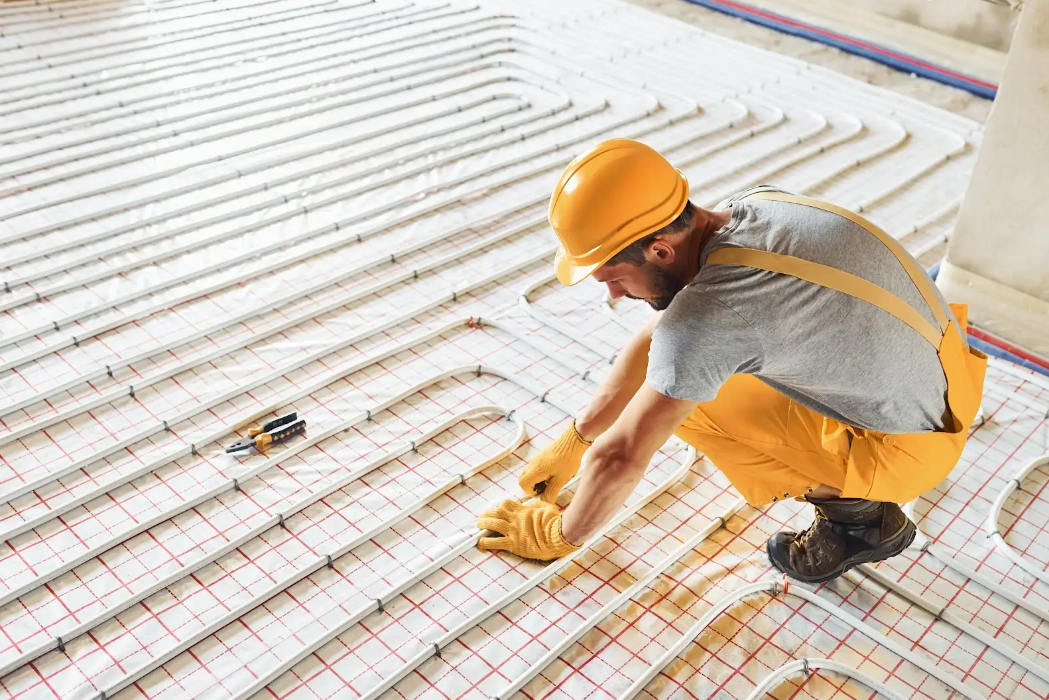
Managing home heating efficiency is a priority for many homeowners, especially during colder months. When temperatures drop, your home’s ability to retain heat can significantly impact your comfort and heating costs. While many factors affect how efficiently your home stays warm, one element that often goes overlooked is flooring. This guide examines the relationship between flooring types and home heating, providing valuable insights to help you make informed decisions.
Hardwood flooring is a popular choice for its timeless appeal and durability, but its performance in terms of heating efficiency is a mixed bag. Hardwood floors feel naturally cooler to the touch, especially in winter, making rooms less cozy without additional warming mechanisms. However, hardwood's density offers an advantage. It can retain heat relatively well if the home has underfloor heating, distributing warmth evenly across the surface.
The type of wood matters, as denser woods like oak or maple, can better store and distribute heat than softer woods like pine. If you rely on traditional heating methods like a furnace, scheduling regular furnace repair and maintenance is a good practice to prevent uneven heating throughout the household.
Carpet is one of the most efficient flooring options available for retaining heat. The fibers and underlay act as natural insulators, trapping heat and creating a warm, cozy environment. For homes in colder climates, carpet can significantly reduce the strain on your heating system by minimizing heat loss through the floor. This means you will likely rely less on your furnace, potentially lowering energy costs over time. However, there is a caveat. Over time, carpet fibers can trap dust and debris, which may affect indoor air quality if not properly maintained. To ensure optimal heating efficiency and prevent strain on your HVAC system, consider pairing carpeted floors with routine check-ups.
Tile flooring is a double-edged sword when it comes to home heating efficiency. On the one hand, tiles are fantastic conductors of heat, an excellent choice for homes with underfloor heating systems. When heat flows beneath the tiles, they distribute it quickly and evenly, offering a pleasant warmth throughout the room. On the other hand, tiles generally feel cold underfoot when no additional heating source is present. This can make rooms less comfortable unless you invest in supplementary heating.
Another factor to consider is the material of the tiles. Ceramic and porcelain tiles conduct heat more effectively than natural stone tiles, which take longer to warm up. Choosing the right tile material can make a significant difference if efficiency is your goal.
Laminate flooring bridges the gap between hardwood and tile in terms of home heating efficiency. While it mimics the look of natural wood, laminate does not offer the same level of heat retention. Its synthetic core tends to be less effective at storing warmth compared to hardwood or carpet. However, that same lightweight composition allows laminate to warm up fairly quickly when exposed to radiant heating systems.
Vinyl flooring has recently surged in popularity thanks to its durability, low cost, and ease of maintenance. Though it may not feel quite as luxurious underfoot as hardwood or tile, vinyl flooring has some unique advantages regarding heating efficiency. Like laminate, vinyl heats up quickly when paired with radiant heat systems, making it a practical choice for regions with milder winters.
However, its thin design means vinyl does little to retain heat once the system is off. For homes relying on central heating, a well-maintained furnace is essential to keep rooms warm. Since vinyl tends to cool down rapidly, any inefficiency in your heating system will quickly become noticeable.
Bamboo flooring, which is increasingly viewed as a sustainable alternative to hardwood, performs surprisingly well in terms of heating efficiency. Because bamboo is a dense material, it retains warmth effectively, particularly when paired with radiant heating systems. Additionally, bamboo’s quick-growing lifecycle makes it an eco-friendly choice, ideal for homeowners seeking greener living solutions.
However, like hardwood, bamboo's effectiveness as a thermal conductor depends on its thickness and quality. Radiant heating systems pair best with bamboo, but if your home uses traditional heating methods, ensuring your furnace is fully operational is vital. Routine furnace repair and system optimization will help amplify the heat distribution, maximizing bamboo's efficiency.
The type of flooring you choose directly impacts how efficiently your home retains heat. Each material, from carpet to laminate, offers unique advantages and challenges. By understanding how flooring interacts with various heating systems, you can make informed decisions that balance aesthetics, comfort, and efficiency. And remember—the right combination of flooring and a well-maintained furnace ensures your home remains a cozy haven no matter the season.